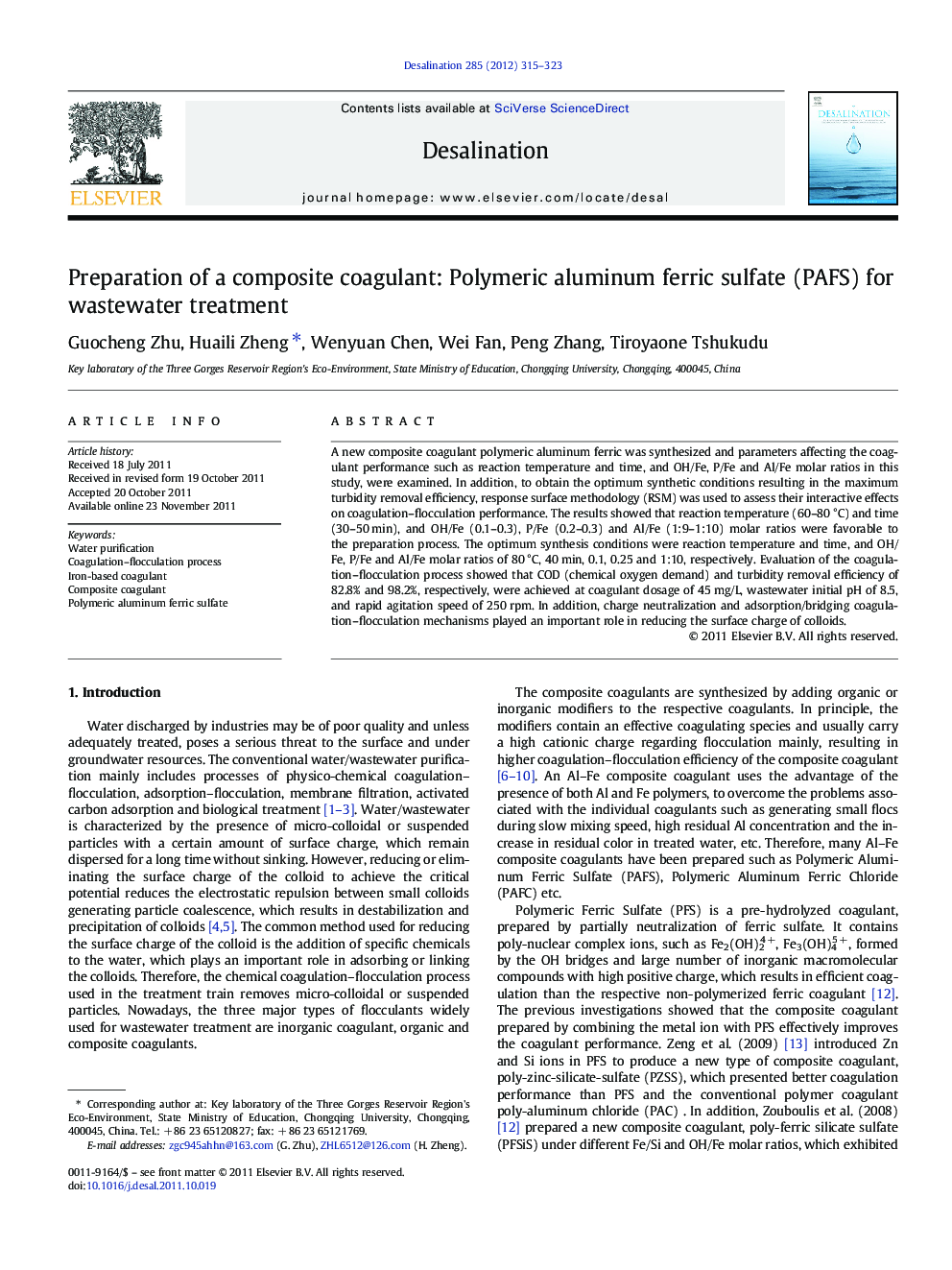| Article ID | Journal | Published Year | Pages | File Type |
|---|---|---|---|---|
| 624742 | Desalination | 2012 | 9 Pages |
A new composite coagulant polymeric aluminum ferric was synthesized and parameters affecting the coagulant performance such as reaction temperature and time, and OH/Fe, P/Fe and Al/Fe molar ratios in this study, were examined. In addition, to obtain the optimum synthetic conditions resulting in the maximum turbidity removal efficiency, response surface methodology (RSM) was used to assess their interactive effects on coagulation–flocculation performance. The results showed that reaction temperature (60–80 °C) and time (30–50 min), and OH/Fe (0.1–0.3), P/Fe (0.2–0.3) and Al/Fe (1:9–1:10) molar ratios were favorable to the preparation process. The optimum synthesis conditions were reaction temperature and time, and OH/Fe, P/Fe and Al/Fe molar ratios of 80 °C, 40 min, 0.1, 0.25 and 1:10, respectively. Evaluation of the coagulation–flocculation process showed that COD (chemical oxygen demand) and turbidity removal efficiency of 82.8% and 98.2%, respectively, were achieved at coagulant dosage of 45 mg/L, wastewater initial pH of 8.5, and rapid agitation speed of 250 rpm. In addition, charge neutralization and adsorption/bridging coagulation–flocculation mechanisms played an important role in reducing the surface charge of colloids.
► Polymeric aluminum ferric sulfate was a non-stoichiometric basic iron sulfate salt. ► Reaction temperature and time, and Al/Fe, OH/Fe and P/Fe molar ratio, were examined. ► Coagulant dosage, agitation speed and wastewater initial pH were experimentally tested. ► Charge neutralization and adsorption/bridging were the flocculation mechanisms.
